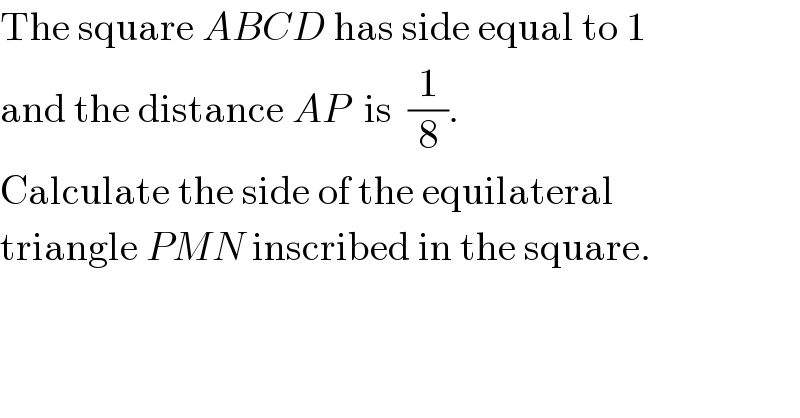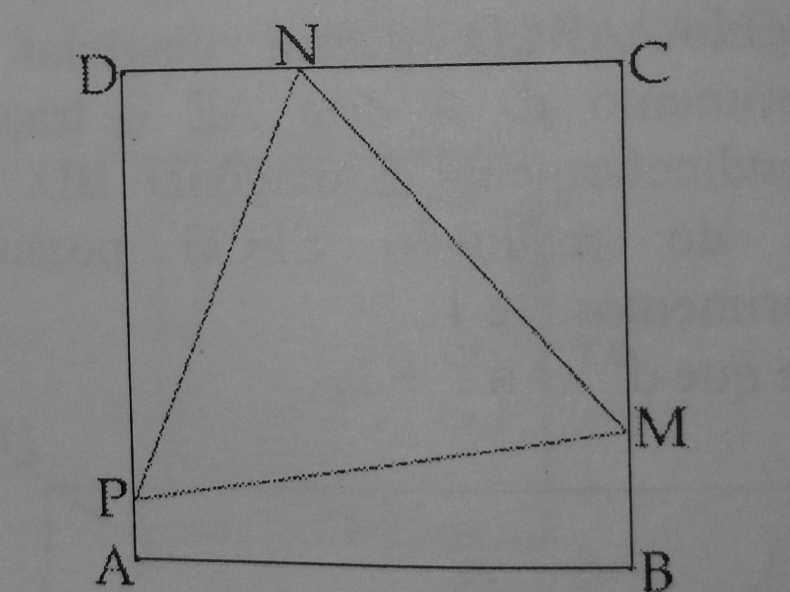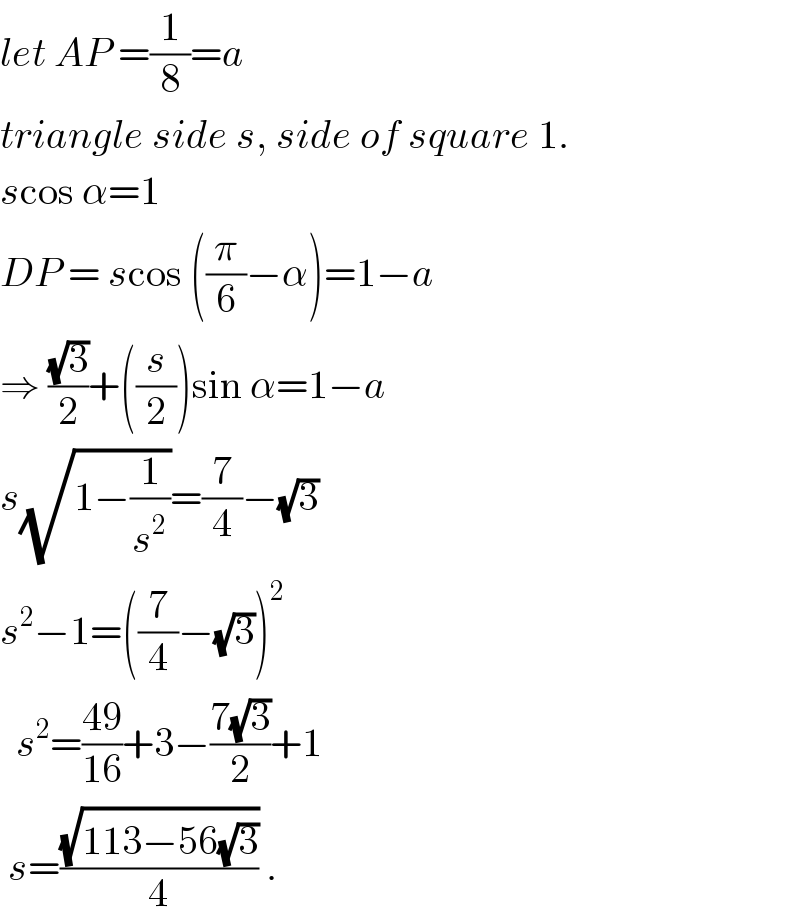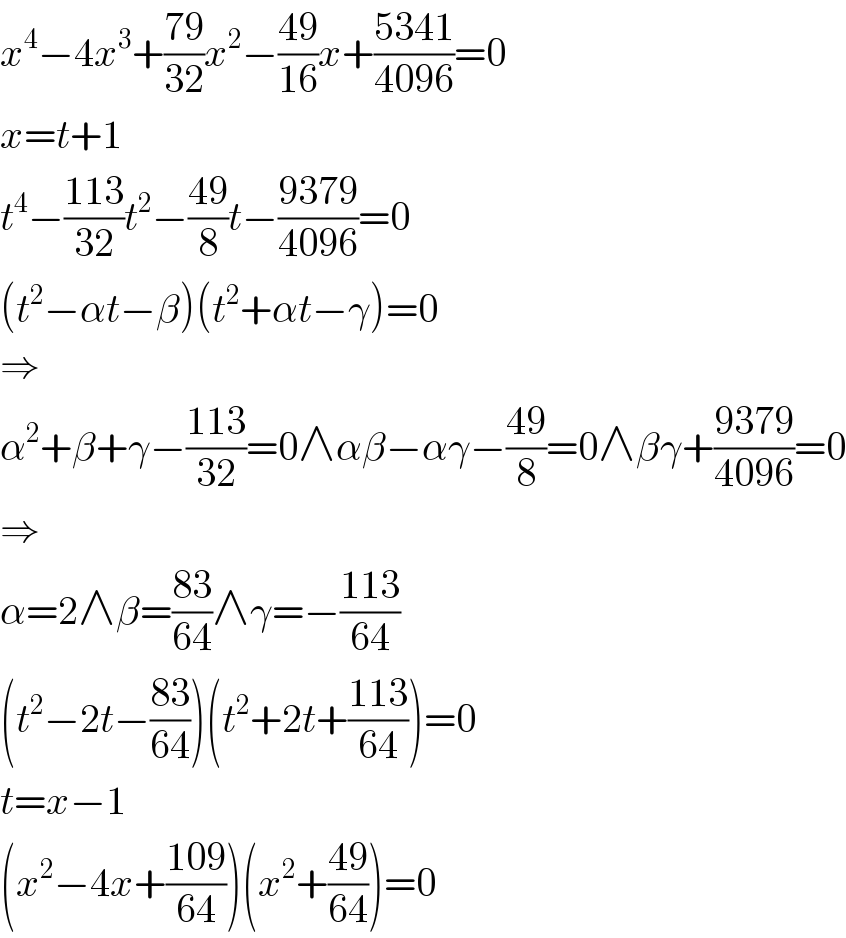
Question and Answers Forum
Question Number 68831 by Maclaurin Stickker last updated on 15/Sep/19

Commented by Maclaurin Stickker last updated on 15/Sep/19

Commented by ajfour last updated on 16/Sep/19

Commented by Maclaurin Stickker last updated on 16/Sep/19

Answered by MJS last updated on 16/Sep/19
![P= ((0),((1/8)) ) M= ((1),(y) ) N= ((x),(1) ) ∣PM∣^2 =∣PN∣^2 =∣MN∣^2 y^2 −(1/4)y+((65)/(64))=x^2 +((49)/(64))=x^2 +y^2 −2x−2y+2 y^2 −(1/4)y+((65)/(64))=x^2 +y^2 −2x−2y+2 ⇒ y=(4/7)x^2 −(8/7)x+(9/(16)) y^2 −(1/4)y+((65)/(64))=x^2 +((49)/(64)) ⇒ x^4 −4x^3 +((79)/(32))x^2 −((49)/(16))x+((5341)/(4096))=0 (x^2 +((49)/(64)))(x^2 −4x+((109)/(64)))=0 x∈[0; 1] ⇒ x=2−((7(√3))/8) ⇒ y=((15)/8)−(√3) ⇒ side s=((√(113−56(√3)))/4)](Q68856.png)
Commented by Maclaurin Stickker last updated on 16/Sep/19

Commented by Maclaurin Stickker last updated on 16/Sep/19

Commented by Maclaurin Stickker last updated on 16/Sep/19

Commented by MJS last updated on 16/Sep/19

